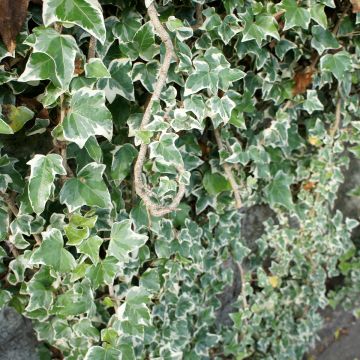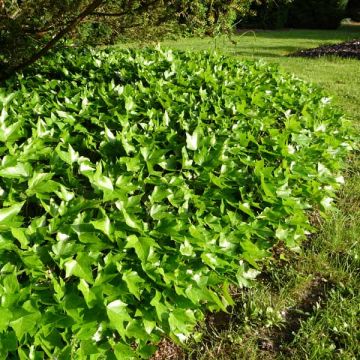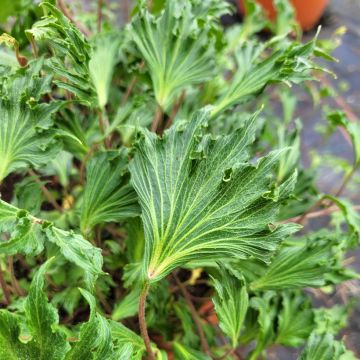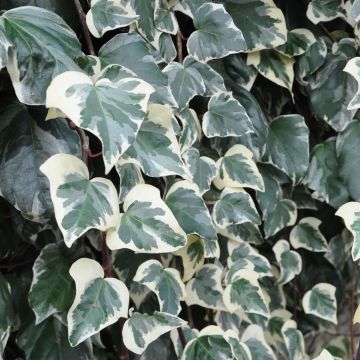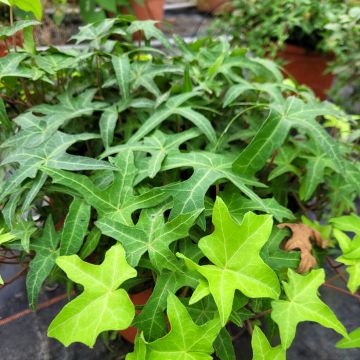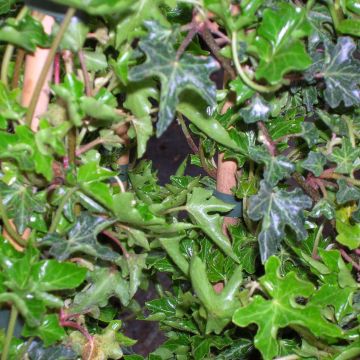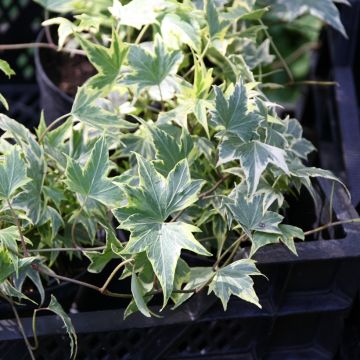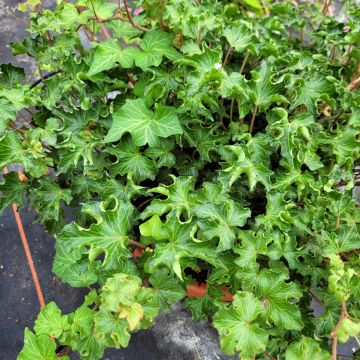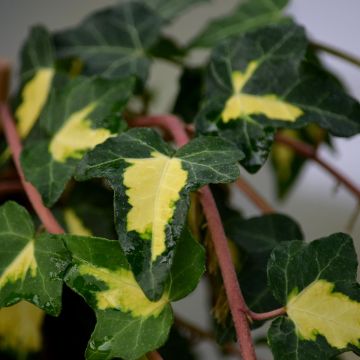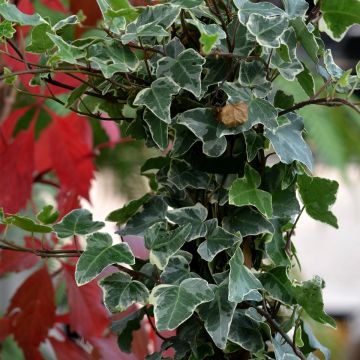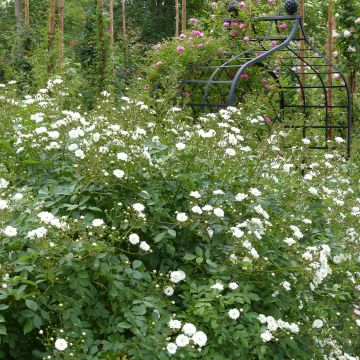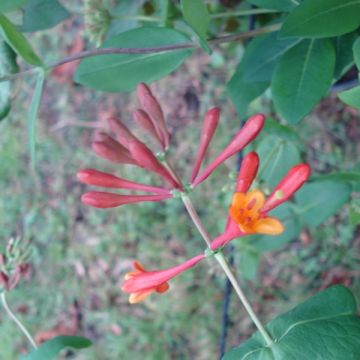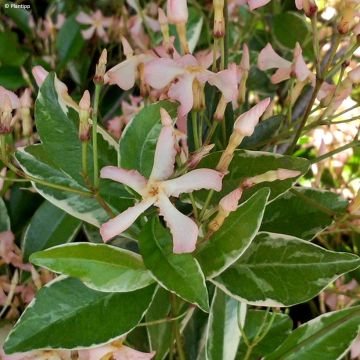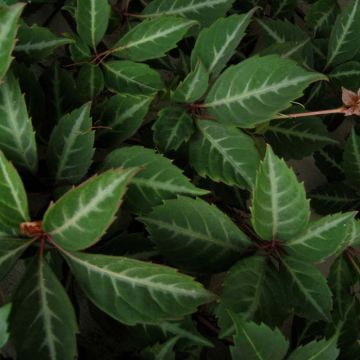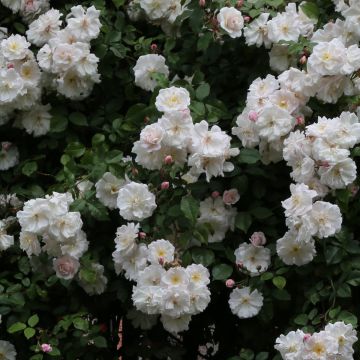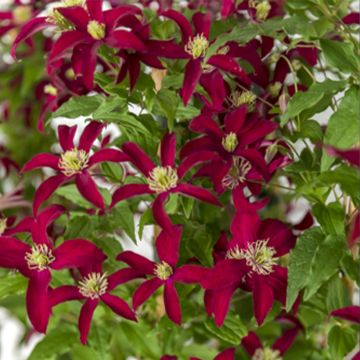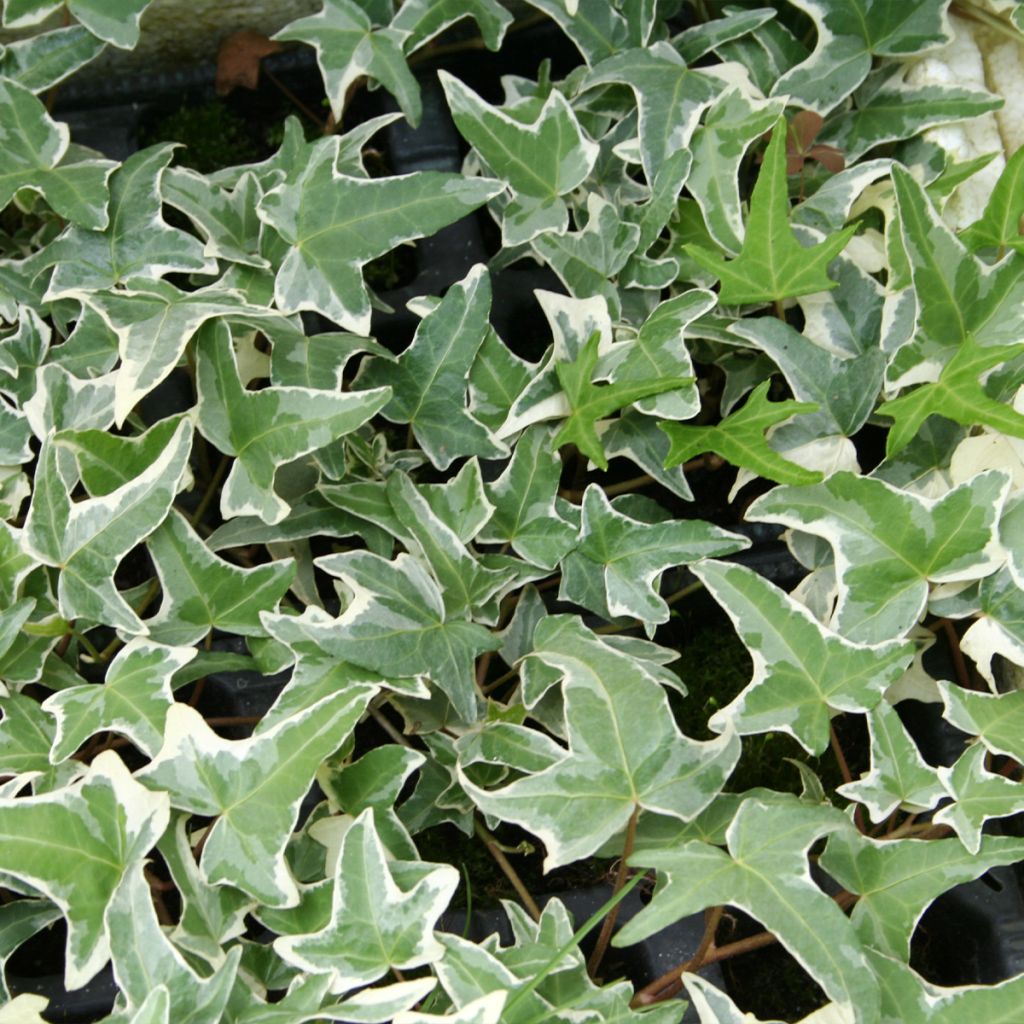

Hedera helix Sagittifolia Variegata - Common Ivy
Hedera helix Sagittifolia Variegata - Common Ivy
Hedera helix Sagittifolia Variegata
Common Ivy, English Ivy, European Ivy
This item cannot be shipped to the selected country
Delivery charge from €5.90
Delivery charge from €5.90
More information
Schedule delivery date,
and select date in basket
This plant carries a 6 months recovery warranty
More information
We guarantee the quality of our plants for a full growing cycle, and will replace at our expense any plant that fails to recover under normal climatic and planting conditions.
From €5.90 for pickup delivery and €6.90 for home delivery
Express home delivery from €8.90.
From €5.90 for pickup delivery and €6.90 for home delivery
Express home delivery from €8.90.
Does this plant fit my garden?
Set up your Plantfit profile →
Description
Hedera helix 'Sagittifolia Variegata' is a variety of Common Ivy that is highly decorative throughout the year. It is hardy and indifferent to soil conditions, like most of its cousins. This ivy has trilobed leaves, with a stretched central lobe. The leaves are various shades of green, with a creamy white margin. Ornamental all year round, it is perfect for brightening up shaded areas in the garden. As a climbing plant, it can cling to any support using its climbing roots to create a beautiful green decoration without the risk of overgrowth, as its growth rate is relatively limited.
The Ivies belong to the Araliaceae family, which includes cousins such as Ginseng and Fatsias. This family consists of around fifty genera and hundreds of species, and is quite varied, hosting both trees and lianas, as well as shrubs and even some herbaceous plants. The genus Hedera itself includes a dozen species, with the most common in temperate European latitudes being Common Ivy or Hedera helix. This giant of European forests can reach lengths of tens of metres and climb to the tops of surrounding trees.
'Sagittifolia Variegata' is a variety with a much more modest size than the typical botanical species. It will climb to a height of 1.5m (5ft), or even 2m (7ft), with a comparable spread in width. When used as ground cover, it can spread a little more, but never to the point of becoming invasive. "Sagittifolia" literally means "arrow-shaped leaf", referring to the stretched and pointed central lobe, framed by 2 almost perpendicular and shorter lobes, resembling the foot of a goose, approximately 4cm (2in) wide and 6cm (2in) long. "Variegata" indicates that the leaf has variegation, in this case, a creamy white margin running along the edge of the lamina, with a width that can vary. The rest of the lamina is green, in various shades, forming an irregular pattern unique to each leaf. The leaves themselves also vary in shape, sometimes having 5 lobes instead of 3, and can be more or less deeply incised. The result of this mix of shapes and colours is particularly aesthetic and gives a cheerful aspect to the foliage, which is useful in shaded areas where this Ivy will thrive.
The stems attach themselves to supports using powerful climbing roots. This Ivy can therefore climb a wall or an arch, or run along the ground. In autumn, the nectar from its inconspicuous green flowers, in the form of globular inflorescences, is an excellent source of nectar for bees.
Very easy to grow, this climber thrives in most soil types, except for excessively dry ones. Hardy, it can withstand temperatures as low as -20°C (-4°F) and can be grown practically anywhere without requiring any specific maintenance. An ideal plant for small gardens and beginners.
Hedera helix 'Sagittifolia Variegata' will fit perfectly into a contemporary garden with its beautiful foliage. Its limited size allows it to be grown in a container, where it will cascade and form an intricate display. In the garden, it will make an excellent ground cover, capable of discouraging weeds in semi-shaded or even shaded areas. You can also create an original and charming scene by planting it at the base of a tree trunk surrounded by a carpet of shade-adapted perennials. For example, pair it with Creeping Bugle, which forms beautiful spreading clumps. There are many varieties available, including some with purple or golden foliage that will create a nice contrast with our little Ivy's foliage. Caucasian Forget-me-not, or Brunnera, is also a great choice, especially for heavily shaded areas. And for a variety of blooms, go for a perennial Geranium, such as Geranium phaeum 'Raven', a beautiful variety with dark purple flowers that is easy to grow.
Report an error about the product description
Hedera helix Sagittifolia Variegata - Common Ivy in pictures
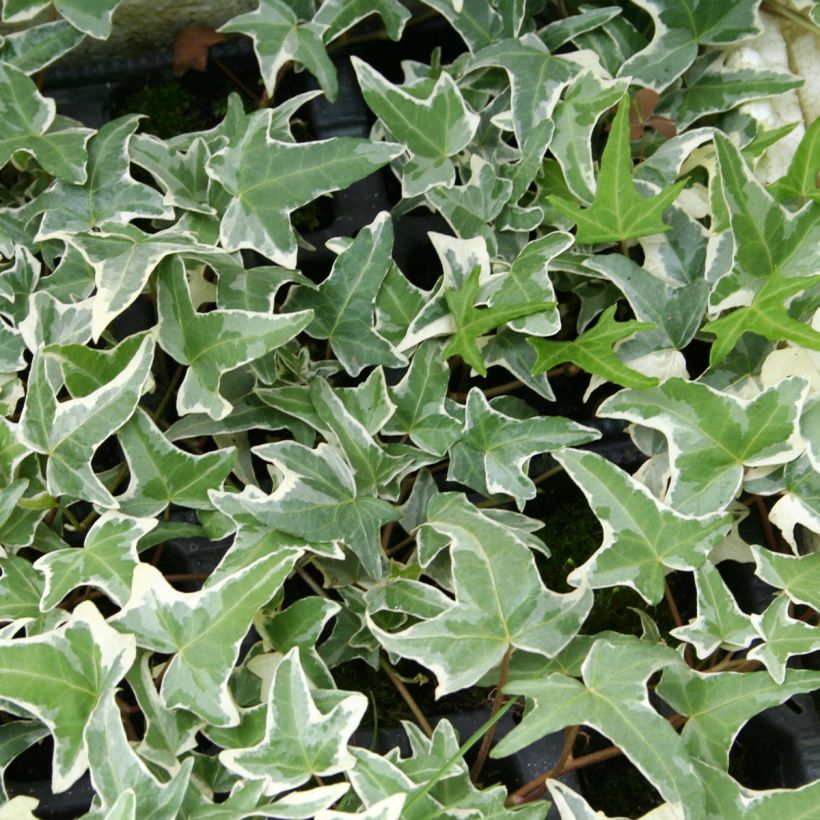

Plant habit
Flowering
Foliage
Botanical data
Hedera
helix
Sagittifolia Variegata
Araliaceae
Common Ivy, English Ivy, European Ivy
Cultivar or hybrid
Other Hedera - Ivy
Planting and care
Hedera helix 'Sagittifolia Variegata' is easy to grow in any ordinary soil, and can be planted all year round. It prefers a fertile, moist, well-drained soil, but is also tolerant (in terms of the presence of limestone or clay if the soil is well worked) and quite resistant to drought once established. Ideally, plant it against a wall, in a semi-shaded position and sheltered from cold winds to help it settle, and monitor watering during the first 2 years after planting, especially in dry summers. To promote faster growth of young shoots, fix the older ones to the ground (layering). Don't hesitate to rejuvenate the plant by removing old branches. Regular pruning is needed to shape it. Remove any branches that have non-variegated leaves or those that take on an upright, bushy form, if necessary.
For container cultivation, mix 7 parts ordinary soil, 3 parts compost, and 2 parts sand. Water regularly and apply fertiliser every month during the growing season. Keep the substrate moderately moist during winter.
Planting period
Intended location
Care
This item has not been reviewed yet - be the first to leave a review about it.
Foolproof climbers
Haven't found what you were looking for?
Hardiness is the lowest winter temperature a plant can endure without suffering serious damage or even dying. However, hardiness is affected by location (a sheltered area, such as a patio), protection (winter cover) and soil type (hardiness is improved by well-drained soil).

Photo Sharing Terms & Conditions
In order to encourage gardeners to interact and share their experiences, Promesse de fleurs offers various media enabling content to be uploaded onto its Site - in particular via the ‘Photo sharing’ module.
The User agrees to refrain from:
- Posting any content that is illegal, prejudicial, insulting, racist, inciteful to hatred, revisionist, contrary to public decency, that infringes on privacy or on the privacy rights of third parties, in particular the publicity rights of persons and goods, intellectual property rights, or the right to privacy.
- Submitting content on behalf of a third party;
- Impersonate the identity of a third party and/or publish any personal information about a third party;
In general, the User undertakes to refrain from any unethical behaviour.
All Content (in particular text, comments, files, images, photos, videos, creative works, etc.), which may be subject to property or intellectual property rights, image or other private rights, shall remain the property of the User, subject to the limited rights granted by the terms of the licence granted by Promesse de fleurs as stated below. Users are at liberty to publish or not to publish such Content on the Site, notably via the ‘Photo Sharing’ facility, and accept that this Content shall be made public and freely accessible, notably on the Internet.
Users further acknowledge, undertake to have ,and guarantee that they hold all necessary rights and permissions to publish such material on the Site, in particular with regard to the legislation in force pertaining to any privacy, property, intellectual property, image, or contractual rights, or rights of any other nature. By publishing such Content on the Site, Users acknowledge accepting full liability as publishers of the Content within the meaning of the law, and grant Promesse de fleurs, free of charge, an inclusive, worldwide licence for the said Content for the entire duration of its publication, including all reproduction, representation, up/downloading, displaying, performing, transmission, and storage rights.
Users also grant permission for their name to be linked to the Content and accept that this link may not always be made available.
By engaging in posting material, Users consent to their Content becoming automatically accessible on the Internet, in particular on other sites and/or blogs and/or web pages of the Promesse de fleurs site, including in particular social pages and the Promesse de fleurs catalogue.
Users may secure the removal of entrusted content free of charge by issuing a simple request via our contact form.
The flowering period indicated on our website applies to countries and regions located in USDA zone 8 (France, the United Kingdom, Ireland, the Netherlands, etc.)
It will vary according to where you live:
- In zones 9 to 10 (Italy, Spain, Greece, etc.), flowering will occur about 2 to 4 weeks earlier.
- In zones 6 to 7 (Germany, Poland, Slovenia, and lower mountainous regions), flowering will be delayed by 2 to 3 weeks.
- In zone 5 (Central Europe, Scandinavia), blooming will be delayed by 3 to 5 weeks.
In temperate climates, pruning of spring-flowering shrubs (forsythia, spireas, etc.) should be done just after flowering.
Pruning of summer-flowering shrubs (Indian Lilac, Perovskia, etc.) can be done in winter or spring.
In cold regions as well as with frost-sensitive plants, avoid pruning too early when severe frosts may still occur.
The planting period indicated on our website applies to countries and regions located in USDA zone 8 (France, United Kingdom, Ireland, Netherlands).
It will vary according to where you live:
- In Mediterranean zones (Marseille, Madrid, Milan, etc.), autumn and winter are the best planting periods.
- In continental zones (Strasbourg, Munich, Vienna, etc.), delay planting by 2 to 3 weeks in spring and bring it forward by 2 to 4 weeks in autumn.
- In mountainous regions (the Alps, Pyrenees, Carpathians, etc.), it is best to plant in late spring (May-June) or late summer (August-September).
The harvesting period indicated on our website applies to countries and regions in USDA zone 8 (France, England, Ireland, the Netherlands).
In colder areas (Scandinavia, Poland, Austria...) fruit and vegetable harvests are likely to be delayed by 3-4 weeks.
In warmer areas (Italy, Spain, Greece, etc.), harvesting will probably take place earlier, depending on weather conditions.
The sowing periods indicated on our website apply to countries and regions within USDA Zone 8 (France, UK, Ireland, Netherlands).
In colder areas (Scandinavia, Poland, Austria...), delay any outdoor sowing by 3-4 weeks, or sow under glass.
In warmer climes (Italy, Spain, Greece, etc.), bring outdoor sowing forward by a few weeks.

































